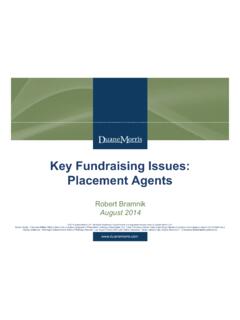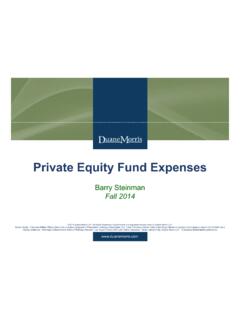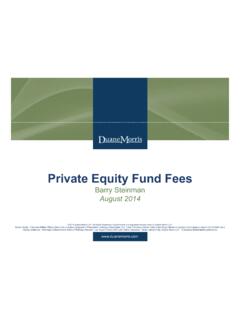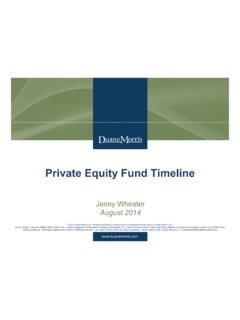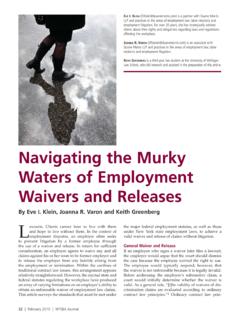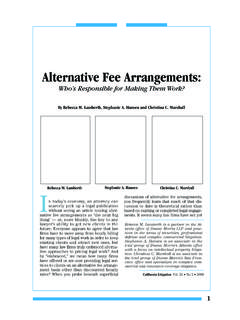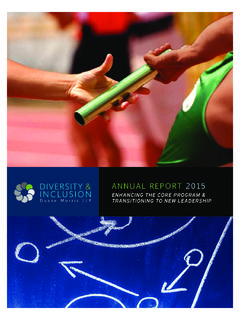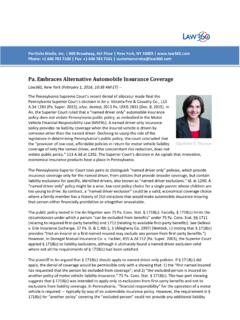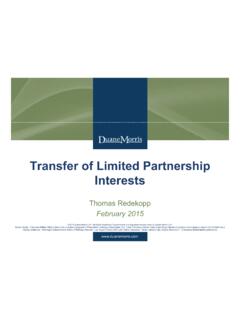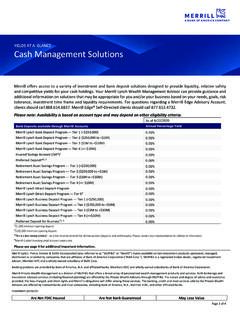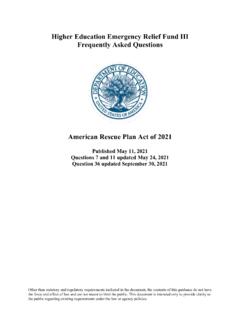Transcription of Private Equity Fund Distribution Waterfalls
1 2014 Duane Morris LLP. All Rights Reserved. Duane Morris is a registered service mark of Duane Morris LLP. Duane Morris Firm and Affiliate Offices | New York | London | Singapore | Philadelphia | Chicago | Washington, | San Francisco | Silicon Valley | San Diego | Boston | Houston | Los Angeles | Hanoi | Ho Chi Minh City | Atlanta | Baltimore | Wilmington | Miami | Boca Raton | Pittsburgh | Newark | Las Vegas | Cherry Hill | Lake Tahoe | Myanmar | Oman | Mexico City | Duane Morris LLP A Delaware limited liability partnership Private Equity fund Distribution Waterfalls David Sussman June 2014 Key Concepts Relating to PE Distributions Carried Interest Preferred Returns Examples There will be references in this presentation to the ILPA Principles. ILPA is the institutional Limited Partners Association that provides a set of best practices for general partners and limited partners in the Private Equity industry.
2 To date, there have been two versions of the ILPA Principles, and they can be found at Carried Interest Generally Basic Concept: A form of incentive compensation for the recruitment and retention of talented investment managers. Generally treated as an interest in the profits of the fund also known as the carry, performance allocation, promote, promoted interest or override Size of the Carried Interest (market standard): Buyout Funds and Real Estate Funds 20% of the fund s profits Venture Capital Funds 20% of the fund s profits, although some Funds charge more than 20% Funds of funds 5% to 10% The carried interest may be subject to a preferred return or hurdle rate (discussed below) Taxation: Generally treated as capital gains to the General Partner (US proposals exist to convert the Carried Interest to ordinary income to be discussed in other presentations).
3 Taxation UK: To ensure tax efficiency in the UK, it is important to stick closely to the British Private Equity & Venture Capital Association (BVCA) model partnership carried interest structure and route the carry through a separate limited partnership interest (owned by the Carried Interest Partner). fund Income Subject to Carried Interest Capital Gains In all Funds, the Carried Interest is based upon the net capital appreciation attributable to the Funds investments. Dividend and Interest Income Earned from Portfolio Investments of the fund ILPA Principles: ILPA suggests that no Carried Interest should be paid on dividend and interest income earned by the fund with respect to its portfolio investments. US Market Approach: General Partners and Investors often take the approach that dividends and interest income should be included in the calculation of the Carried Interest based upon two theories: (i) that Investors returns should be based upon a cash-in, cash-out model, including dividends, interest, payment of management fees, and organizational expenses, and (ii) failure to include dividends and interest from the Carried Interest causes a misalignment of interest between the GP and the investors.
4 UK Market Approach: all amounts of income , as that term is defined in the relevant limited partnership agreement are allocated and distributed in accordance with the Distribution waterfall ( are included for the purposes of calculating the carry). The arguments in favour reflect those posited above by US GPs and Investors. Practically, most Venture Capital and Leveraged Buyout Funds do NOT receive interest and dividends so this issue is generally insignificant. Break-Up Fees and Commitment Fees In all Funds, break-up fees and commitments fees are included in the calculation of the Carried Interest Short-Term Investment In all Funds, short-term interest income is excluded. Carried Interest Calculation of Profits Hedge Funds: Hedge Funds generally invest in marketable securities for which market quotations are readily available.
5 As a result, most Hedge Funds define and calculate profits and losses by reference to both realized and unrealized gains and losses with respect to its investments. Venture Capital and Leveraged Buyout funds generally invest in illiquid securities. As a result, most VC and LBO funds calculate profits and losses by reference to only realized gains and losses. An exception to this model relates to distributions of securities in-kind. In such event, the calculation of profits and losses does include the unrealized gains and losses with respect to such securities. Management Fees and Organizational Expenses: The issue is whether profits should take into account amounts attributable to Management Fees and Organizational Expenses. ILPA Principles: The best practices are that such fees and expenses should be included in full in determining the profits attributable to the realized investments as quickly as possible.
6 (as opposed to pro rata as discussed below) Carried Interest Calculation of Profits US Market Standard: Include such fees/expenses in the calculations of profits but reduce the profits on the realized investment by only a portion of the total amount of the Management Fees and Organizational Expenses corresponding to the portion of the total capital contributions attributable to the realized investment. UK Market Standard: The GP receives a priority Distribution out of profits to cover the management fee and will be responsible for paying the fee to the manager out of the GP profit share. Before profits arise, the GP will be entitled to borrow the amount required out of drawings from the limited partners against their commitments, to be repaid out of the priority profit share in due course. Organizational and/or formation expenses of a fund will frequently be paid by the fund itself up to a specified limit, with any excess for the account of the general partner or set off against the management fee.
7 European Market Standard: The manner in which profits are calculated, allocated and distributed varies depending on the European jurisdictions and the particular vehicle utilized in that jurisdiction. Carried Interest Timing Issues Issue Generally: Whether the Carried Interest is calculated on a deal-by-deal basis or on an aggregate basis and, if the latter, whether that is based upon the total unreturned capital contributions made by the investors on realized and unrealized investments or just realized investments (and unrealized investments that have been written down for financial reporting purposes). US and UK Model: Deal-by-deal basis by reference to realized investments. European Model (increasingly being accepted in the US and UK): Aggregate basis based upon unreturned capital contributions on realized and unrealized investments.
8 ILPA Principles: Restrict calculations of the Carried Interest until the investors have recovered 100% of their Capital Contributions on realized and unrealized investments. US Market Trend: Most US VC and LBO funds assume that all unrealized investments will generate proceeds equal to their book/carrying value. As a result, they calculate the Carried Interest based upon an aggregate approach but only with respect to realized investments (and unrealized investments that are written down). As a result, the US market trend is NOT to return all Capital Contributions on unrealized investments unless such unrealized investments have been written down for financial reporting purposes. Preferred Returns Generally Standard in the Industry Leveraged Buyout Funds and fund of Funds: Preferred Returns are standard Venture Capital Funds: Preferred Returns are less common but are sometimes used to attract institutional investors Hedge Funds: Preferred Returns are rare Formulating Preferred Returns Fixed interest rate approach ( 8%) compounding annually (market standard), semi-annually, or quarterly Typically range from 5% to 12% 8% is the current standard Variable interest rate approach ( , yield on the 1-year US treasury or the 1-year LIBOR) compounding annually (market standard), semi-annually or quarterly Market Index approach ( , S&P 500 index, Thomson Financial US Private Equity Performance Index (PEPI) or Preqin performance benchmarks).
9 The idea with this approach is to create a benchmark for superior performance that relates closely to the investment strategy of the fund . Preferred Returns Calculations Issue: Whether Preferred Returns should accrue and be calculated based upon all capital contributions made by the investors or only the capital contributions that are directly attributable to portfolio investments. ILPA Principles: All capital contributions, including capital contributions used to fund Management Fees and Organizational Expenses, should accrue the Preferred Return. US-based Funds (No Market Standard): Investors are becoming increasingly successful in having the Preferred Return accrue with respect to all capital contributions, including capital contributions attributable to Management Fees and Organizational Expenses. Many sponsors are successful at resisting the accrual of a Preferred Return on capital contributions used to pay Management Fees and Organizational Expenses.
10 UK-based Funds: the Preferred Return should accrue on the outstanding balance of all drawn down commitments (including any that were repaid and drawn down again). Preferred Returns General Partner Catch-Up Pure Preferred Returns (or Hard Preferred Returns): The Carried Interest is applied only to profits in excess of the specified Preferred Return. This has the effect of reducing the Carried Interest as a percentage of the fund s total profits. Preferred Returns with GP (UK: Carried Interest Partner) Catch-Ups (or Hurdle Rates): Investors are provided a preferential return but then the GP (UK: Carried Interest Partner) is thereafter entitled to receive a share of the profits that exceeds the Carried Interest percentage until, on a cumulative basis, the GP (UK: Carried Interest Partner) has received the agreed Carried Interest percentage on the aggregate profits.
